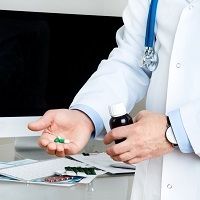A Correct, But Subtherapeutic Antiepileptic Dose Can Be Remedied
Antiepileptic drug levels that remain subtherapeutic—despite the correct dose and proper adherence—can improve with adjustment for pharmacokinetics.

A retrospective evaluation of over 21,000 antiepileptic drug (AED) plasma levels determined that more than 70% were persistently subtherapeutic, in children with epilepsy in both inpatient and outpatient settings.
While poor treatment adherence could contribute to the finding in outpatients, other factors are likely to contribute to this occurring with inpatients "who receive adequate doses of the correct medication," suggested author Alberto Lazarowski, PhD, Institute of Pathophysiology and Clinical Biochemistry, Clinical Biochemistry Department, University of Buenos Aires, CABA, Argentina, and colleagues.
"The most striking finding of this study was that these unexpected results were detected in a large number of patients during long periods of hospitalization," Lazarowski and colleagues indicated.
The investigators conducted a retrospective assessment of 21,050 plasma levels of the most commonly used AEDs in the study population of 3279 children (phenytoin [PHT], phenobarbital [PHB], valproic acid [VPA] and carbamazepine [CBZ]). They reported finding that 71.7% of the PHT inpatient samples and 74.1% of the PHT outpatient samples were persistently subtherapeutic. Serum levels of PHB, VA, and CBZ were also likely to be persistently subtherapeutic, albeit at lower rates (27.8-36.7%). Persistently low levels of PHB were more common in outpatients while low levels of VPA and CBZ were more common among inpatients.
In hospitalized pediatric patients with consecutive subtherapeutic levels coinciding with worsening of seizures, the investigators found a trend of the first AED being discontinued for being ineffective, but without satisfactory outcome from the alternate drug.
"Interestingly, most of these cases presented with seizures that were not controlled by the other drugs they were receiving either, even though those drugs remained within the therapeutic range," they reported.
Lazarowski and colleagues suggest several reasons that appropriate dosing adjustments of the first drug are not being made in response to the low levels, including greater reliance on "recommended dosage range" than on "therapeutic level range."
"It is common that physicians are reluctant to increase an already high dose of an AED, in spite of low plasma levels and poor pharmacological effects," they wrote.
Lazarowski emphasized this in comments to MD Magazine®, recommending that physicians "not underestimate results coming from the laboratory, especially when they are not concordant with the expected."
In an accompanying response to the study, Roy Beran, MD, Professor of Medicine, Department of Medicine, University of New South Wales, Sydney, Australia, suggested other factors could have contributed to the findings, including drug interactions from polypharmacy. He notes that since many of the clinically relevant interactions involve competitive protein binding, measurement of the unbound free fraction of the AEDs "would have enhanced the value of the current study."
In addition, Beran pointed out that the wide spread use of generic versions of the AEDs could have contributed to the outcome. The clinical relevance of pharmacokinetic differences between brand and generic AED are much debated, however.
Lazarowski welcomed the response to the study. "I think it is the opportunity to generate an updated debate on the subject, which includes quality of the original versus generic drugs, but also the pharmacokinetic and pharmacodynamic changes that the same patient suffers during the course of their disease, and where therapeutic drug monitoring can be a biomarker of such changes," he told MD Mag.
The study, “High Incidence of Persistent Subtherapeutic Levels of the Most Common AEDs in Children with Epilepsy Receiving Polytherapy,” was published in Epilepsy Research.